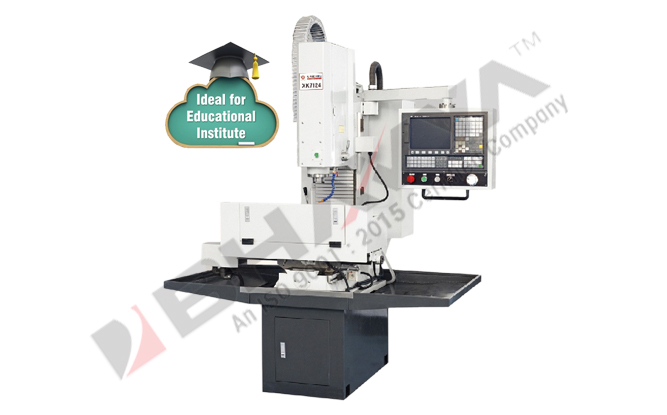If you are a manufacturer of a variety of different types of products, you may want to consider using a Milling Machine to perform the necessary operations. This type of machine is used to create complex shapes using different kinds of end mills. This type of machine is also known as a CNC milling machine. There are a few different things to keep in mind when you are selecting a milling machine. Here are a few of them:
End Mills Milling Machine
Essentially, end mills are small tools that are used to cut out holes and shapes in workpieces. Their cutting teeth are usually located on the edge or face of the tool, and they can cut through a variety of materials. Some end mills have more than one flute, while others are only available in one shape. Regardless of the type of end mill you choose, there are a variety of benefits to using it in your Keyway milling machine.
End mills can be found in a variety of shapes, and they can be used for centre, side, or plunge cuts. The type you choose should depend on the material you’re milling. Some have two or four flutes, while others have three or six. They may have chip-breaking grooves, or they might have a single flute. The shape will determine how much cutting power you’ll need, too.
CNC Milling Tool
The CNC milling tool for Keyway Milling consists of two cutting edges with the same direction of rotation. The radial forces of two cutting edges cancel each other. The cutter has a cylinder-like shape and ends in a point. The plunge drilling function can process a closed depression. It is a useful tool in many applications, including precision milling. CNC milling tool for Keyway Milling features multiple advantages.
The installation with the machine vice is suitable for the milling of keyways on small and medium-sized shafts. This tool features good clamping stiffness and ease of operation. It is easy to align the milling cutter with the workpiece. To align the workpiece, the center of the milling cutter should be aligned with the bisector of V-shaped iron. The symmetry of the keyway is ensured by this installation.
Clamping Technique in Milling Machine
There are two different ways to clamp a Milling Machine. The first technique involves introducing the tool into the keyway until the bottom face is engaged. The tool is then moved rectilinearly without the spindle rotating. This technique will enable the tool to mill the keyway walls in one continuous passage. This method is known as “fixed clamping” and can be employed by anyone of ordinary skill in the art.
The second technique, known as “layering”, involves reducing the keyway layer by layer. The cutter used in layered milling requires backward and forward crushing and a larger feed price than conventional milling. In addition, a blunt milling cutter may grind the completion face. However, it has less versatility than typical cutting. This method is suited for milling medium-length or thin-shaft parts.
Cutting Tolerances in Milling Machine
When buying a new milling machine, it’s important to understand the cutting tolerances. This is critical if you’re going to successfully manufacture a keyway that requires tight tolerances. An off size endmill isn’t going to be able to cut the keyway, and vice versa. The cutting tolerances for a milling machine are determined by the size and type of the milling cutter, not the size of the keyway itself.

To ensure dimensional accuracy, the depth and width of a keyway must be precise. The symmetry tolerance, a tighter value than the parallel tolerance, sets the maximum tolerance for a keyway that is wide and off-centre. These two values are not the same, so if you need to mill a keyway with a specific width and depth, make sure to use a symmetric cutter.
The Bottom Line
A CNC milling machine is used for cutting the keyway of an object. The cutter that is used for this type of milling operation cuts the workpiece layer by layer. This type of milling machine must be designed for the specific type of workpiece since there are several differences in the types and sizes of keyways. A milling machine must have a stable workpiece clamping system, which ensures that the workpiece’s central position does not shift. The centreline of the keyway must also be perfectly aligned with the axis line. And its ease of use makes it the preferred tool for small surface machining.





